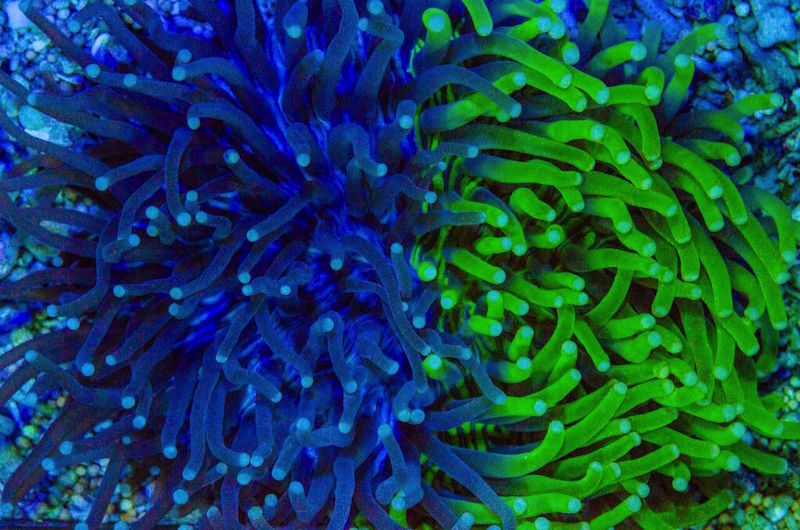It’s quite rare that we see a long tentacle plate coral which is noteworthy enough to turn heads, but we have a special treat for you today. This incredible Heliofungia actiniformis comes to us from Bali Aquarium who spotted this specimen exhibiting a nearly perfect split coloration; grey brown on one side, neon green on the other.
A chimera is an individual organism which is composed of different genetic parts, fused into one. We’ve seen examples of chimeras in Acropora, Australomussa, and more often in Cycloseris disc corals, but this is the first time we’ve documented a very likely candidate for chimerism in a Heliofungia. It is not precisely understood how chimerism arises in corals, but it is believed to occur when two coral larvae fuse together, either while drifting as plankton, or when they settle onto the reef looking for the same prime piece of coral real estate.

For a long time long tentacle plate corals were the only member of the Heliofungia genus, but recently ‘Fungia’ fralinae became Heliofungia fralinae adding just one species to the close relatives of H. actiniformis. As the common name implies, long tentacle plate corals have prodigious tentacles that extend much more than any other fungia or cycloseris species, giving this coral the appearance of a large anemone.
Heliofungia actiniformis is not the largest free-living fungiid in the family, but it certainly is the fleshiest and it is the largest of the species that retain that nice circular shape that the group is famous for. With its large size and such large tentacles, big specimens of H. actiniformis provide a lot of real estate for symbiotic animals to live on and around it. Many different animals have developed a commensal relationship with long tentacle plate corals including shrimp, crabs, and most notably the elusive mushroom coral pipefish, Siokunichthys nigrolineatus.

Other than the highlights mentioned above, there is rarely an opportunity to mention a long tentacle plate coral in aquarium conversation. But this bicolored long tentacle plate coral is really in one-of-a-kind territory, and as great as this coral looks in pictures, we can’t even imagine how startling it probably appears in real life.
The division between the grey-brown and the lime green coloration is extremely stark, and practically fifty-fifty. Long tentacle plate corals are mostly pale white underneath but in this Heliofungia you can see the neon green coloration of the chimera phenomenon extending to the underside as well. For some unknown reason, long tentacle plate corals are much shorter lived in aquariums than all other species of Fungiid, disc and plate corals, but we sure hope that this two-faced H. actiniformis is destined for an aquarium where its full beauty and uniqueness will be appreciated, and preserved.






